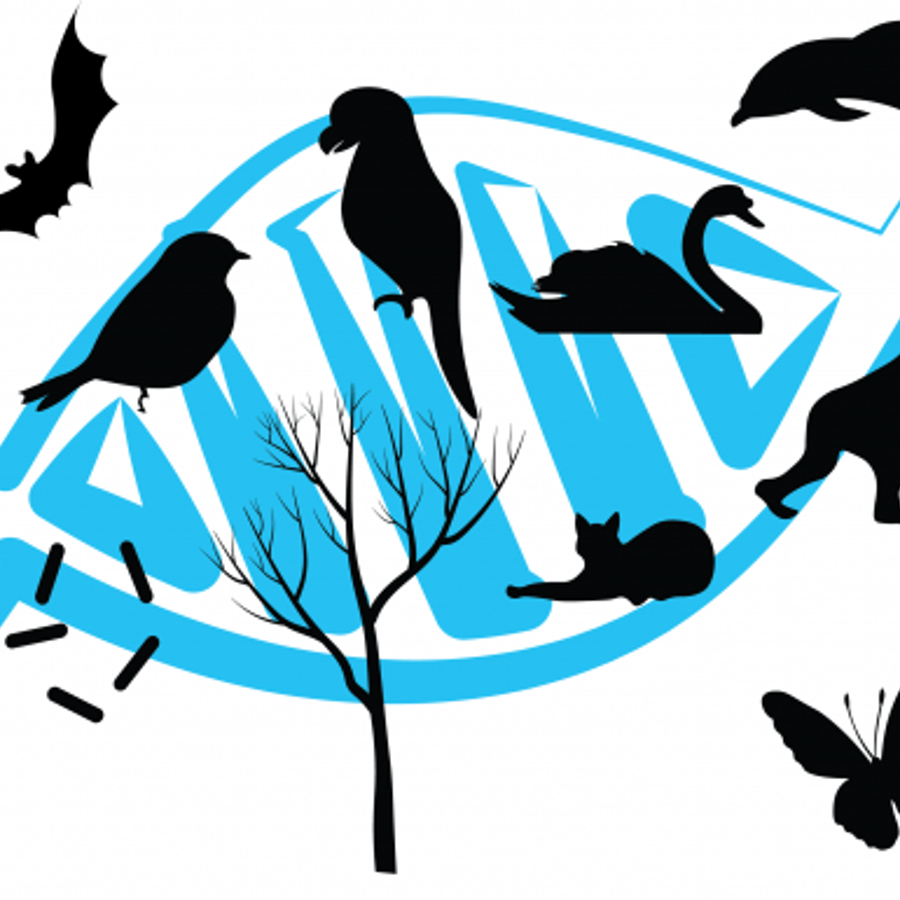
Are there genes in humans that support the idea that we all evolved from other animals?
December 12, 2012

- Related Topics:
- Human evolution,
- Evolution,
- Editor's choice
A curious adult from California asks:
"I have heard we have genes in our DNA for beaks which kind of supports the idea that we all evolved from other animals. If this is the case, are there other recessive genes that we have like the one for the beak?"
We do indeed share many “beak” genes with birds. But of course we don’t have beaks! This is mostly because we use these genes differently than birds.
See, around 315 million years ago, birds and mammals like us shared a common ancestor. This means we shared a common set of genes with this beakless relative.
Over time, birds and people built up different changes in their DNA that led to the differences we see today between us and birds. And one set of these changes were in the “beak genes.”
These genes changed in birds so that they had the instructions for making a beak. Ours changed too, but in ways that didn’t lead to a beak.
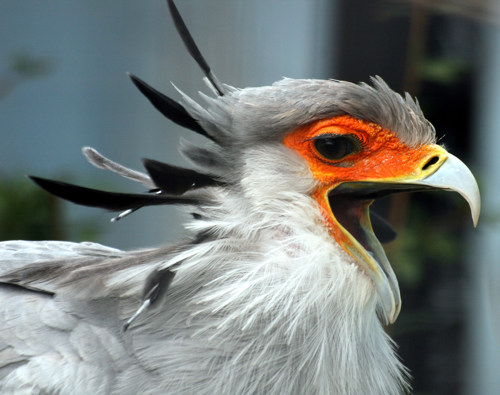
The genes we are talking about are actually involved in bone development. Some of these genes were enlisted into making a beak in birds. We have these genes too, but they don’t have the “beak” mutations. Instead, in humans they are just used for making bones.
This process is so common that it has a name — co-option. Birds co-opted the bone-making genes to make a beak!
And as your question suggests, this isn’t just true for beaks. Lots of other genes like this are scattered throughout our DNA.
For example, as I’ll talk about below, mammals co-opted genes involved in growth and metabolism to make a placenta. Now we give live birth using these genes. See the end of the answer for a table that has a list of some more examples of co-opted genes.
What I’ll do for the rest of the answer is first focus on how DNA changes over time. Then, I’ll get into a little more detail about one of the beak genes we’ve been talking about. Finally, we’ll talk about how beaked mammals like the platypus differ from birds.
Let’s get started!
DNA Changes All the Time
Some people tend to think of DNA as a set of instructions that is passed down unchanged generation after generation. This is not true.
DNA can and does change all the time. DNA mutation (as these changes are called) is a perfectly natural process.
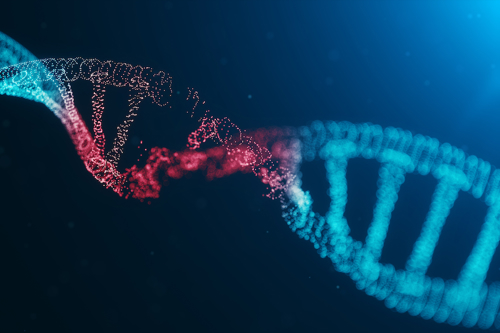
Mistakes can happen when DNA is copied when a cell divides to become two cells. These mistakes are a very common form of mutation.
Mutations can also be caused by radiation, viruses, chemicals, and other pieces of RNA or DNA. If these sorts of changes aren’t fixed by the cell, and they are in the sperm or egg, then they can be passed down to the next generation.
The useful mutations stick around while the bad ones die out. For birds, beaks were very useful. And either mammals didn’t happen to get the “right” set of mutations for a beak or beaks just aren’t that useful for us mammals.
Beak, Shell, and Placenta Co-option
One example of a gene that was co-opted for making beaks in birds is Bone Morphogen Protein 4 (BMP4). This gene is used in bone development in both birds and mammals. But it also gained an extra job in birds… It helps to make a beak! (See the end for how Darwin's famous finches were the key to discovering this gene.)
The region of DNA important for making the BMP4 protein is actually very similar in birds and mammals. But, other regions of DNA telling the BMP4 gene when and how to be used have changed. It is these changes that determine whether BMP4 will tell an embryo to make a beak or not.
So, BMP4 is used for different purposes in birds and mammals. But birds and mammals also use this gene in different ways than a similar gene in snails.
In snails, the BMP4 gene goes by a different name, DPP. (These genes were named before people found out they were from the same gene.) DPP is used many times in snail development, even though snails do not have bones. For example, snails use DPP during shell development.
So, around 550 million years ago, the common ancestor of snails, birds, and mammals used BMP4/DPP. The common function of BMP4/DPP is to make the back different from the belly of the animal (to pattern what’s called the dorsal-ventral axis). Snails co-opted this gene for shell development. Vertebrates co-opted this gene for bone development. Birds then further co-opted this gene for beak development.
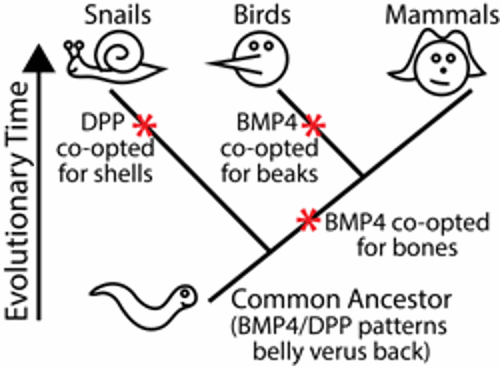
Of course mammals did some co-opting of their own. While all animals have genes involved in growth and metabolism, mammals also use these genes to make a placenta so they can give live birth.
The same is true for lots of other traits, including feathers, limbs and butterfly wing spots. Shared genes have changed over time to develop all of these new traits. Isn’t natural selection cool?!
Beaks in Mammals are Different
Some of you might be wondering about the platypus and echidna. These belong to a special class of mammals (monotremes) that have a beak-like structure called a bill. But it is almost certainly not formed the same way as a bird’s beak.
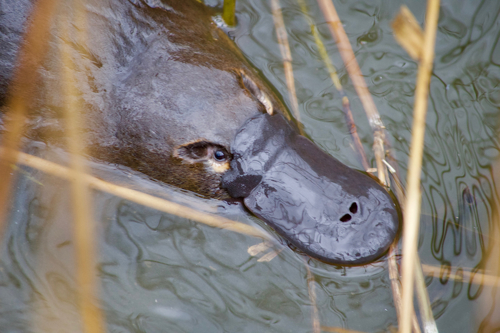
The bill is thought to have evolved in monotremes after they separated from the common ancestor of the rest of mammals. In other words, mammalian “beaks” arose after mammals split from birds. And given how different a mammalian bill is from a bird beak, this isn’t surprising. Birds have an upper and lower beak that surrounds their mouth. Platypus and echidna have only an upper bill that is over their mouth.
In addition, while bird beaks are hard, the bill of the platypus and echidna is soft and flexible and covered with electrical and touch sensors. These sensors help the animal find food.
While platypus and echidna bills are different from bird beaks, we do not know what genes are involved in making the platypus and echidna bills. They might use similar genes, although with different mutations than birds. Or, they might use different genes than birds. Sounds like an interesting question for future scientists!
To finish off, I’ll leave you with a couple of promised resources about other co-opted genes and how Darwin’s finches helped scientists discover BMP4.
Examples of co-opted genes
Here are a few examples of known co-opted genes and their functions:
|
Gene |
General Function |
New (Co-opted) function |
Reference |
|
Proliferating cell nuclear antigen (Pcna) |
Making and fixing DNA |
Placenta development in mammals |
|
|
Syndecan 1 (Sdc1) |
Cell growth and migration |
Placenta development in mammals |
|
|
Sonic hedgehog (Shh) |
Limb formation, pattern brain (along midline) |
Bird feather formation |
|
|
Hox genes |
Pattern body (anterior-posterior axis) |
Pattern vertebrate limbs |
|
|
Distal-less (Dll) |
Limb formation in insects |
Butterfly eyespots |
Darwin's Finches and BMP4
Scientists discovered that BMP4 is used to make beaks by studying Darwin’s famous finches in the Galapagos Islands. These birds have beaks with different shapes and sizes depending on what works best for their environment. For example, the large ground finch has a thick, heavy beak for crushing seeds, while the warbler finch has a thin, fine beak for feeding on small insects.
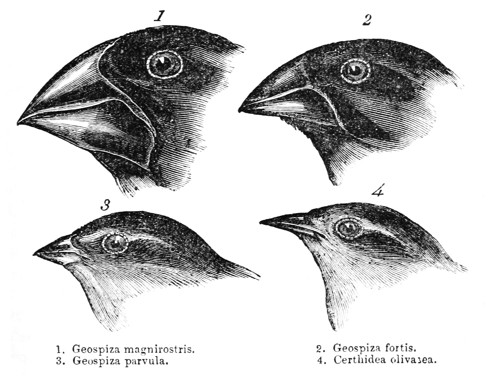
When scientists took a peek at these birds’ DNA, they saw subtle changes around the BMP4 gene. These differences changed when and where the BMP4 protein was made. And this affected how the birds’ beaks turned out. While these aren't the mutations that separate birds from us, they gave scientists clues into what kinds of changes these might be.

Author: Dr. Roberta Hannibal
When this answer was published in 2012, Roberta was a postdoctoral fellow in the Department of Genetics, studying placenta evolution, development and genomics in Julie Baker’s laboratory. She wrote this answer while participating in the Stanford at The Tech program.
 Skip Navigation
Skip Navigation
